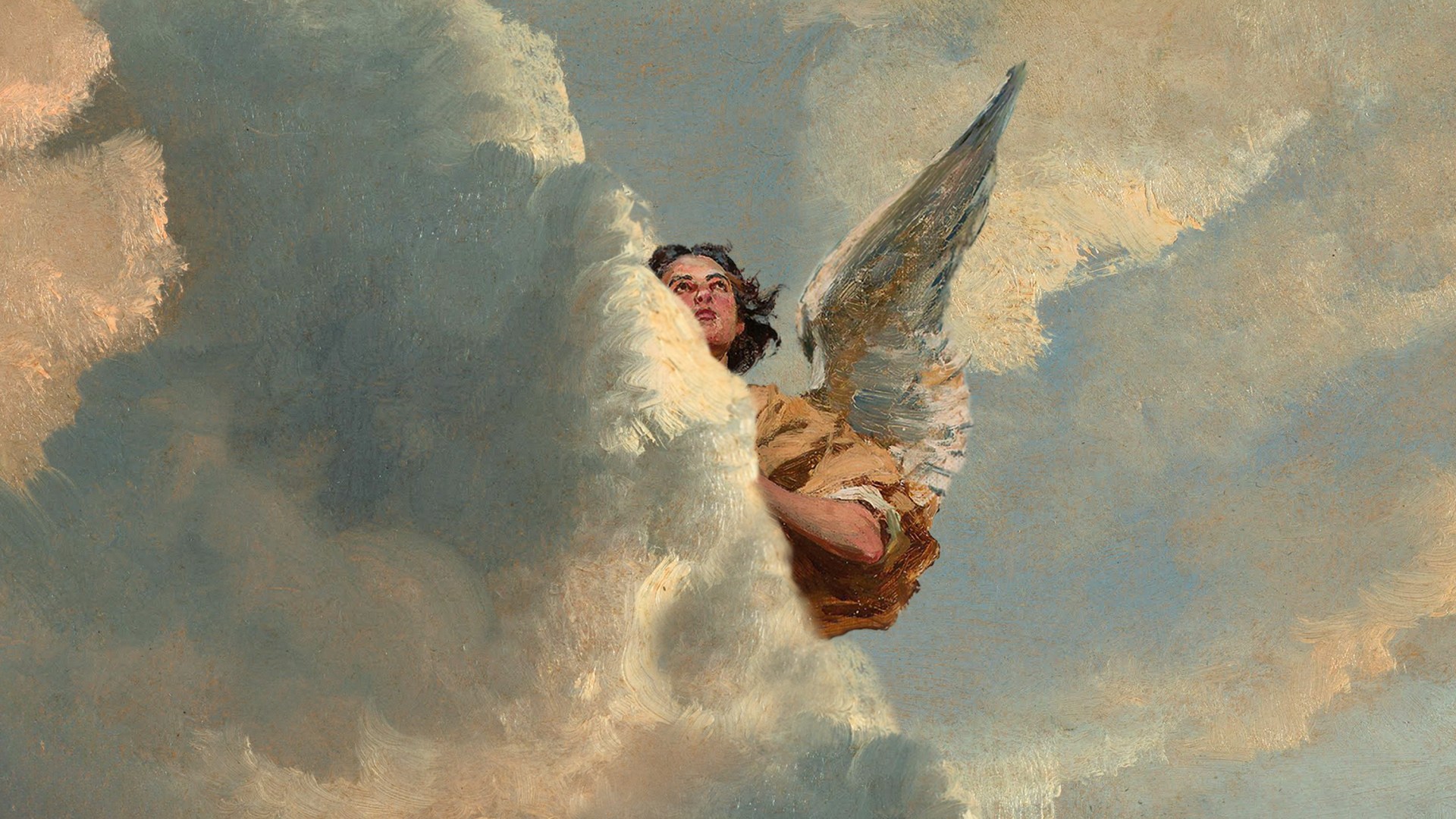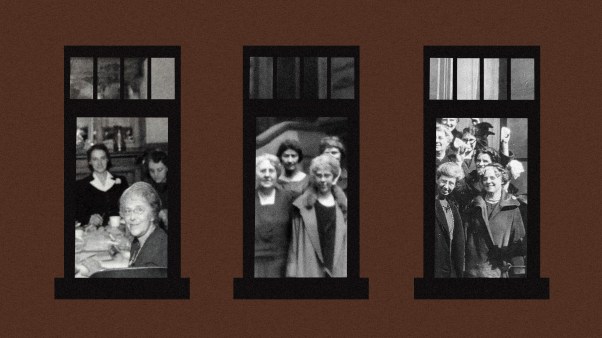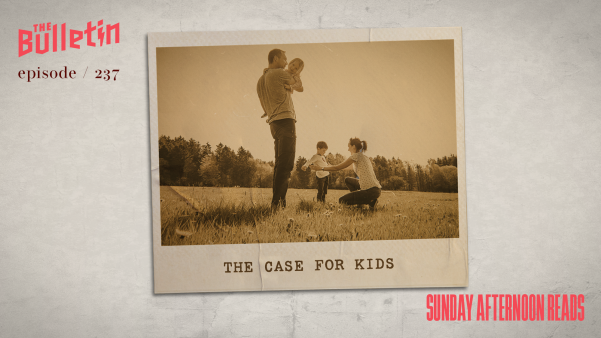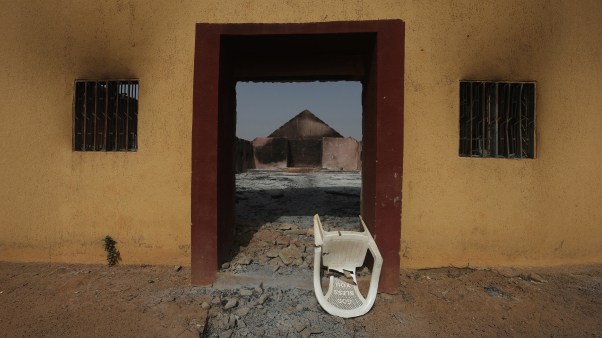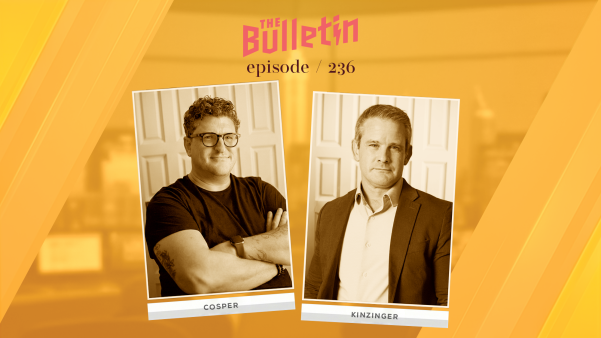In a remarkable 1988 article for The Sunday Telegraph, the distinguished British atheist philosopher A. J. Ayer, architect of a philosophical movement known as logical positivism, recounted his own near-death experience (NDE). Already suffering complications from pneumonia, Ayer choked on a piece of smoked salmon, causing his heart to stop beating for four minutes. But Ayer astonished his medical team by recovering and then telling them about an extraordinary experience. “I was confronted,” he recalled, “by a red light, exceedingly bright, and also very painful even when I turned away from it. I was aware that this light was responsible for the government of the universe.”
One might expect that such an experience would prompt an atheist to reconsider views on God’s existence. But not Ayer—at least not publicly. “My recent experiences,” he wrote, “have slightly weakened my conviction that my genuine death, which is due fairly soon, will be the end of me, though I continue to hope that it will be. They have not weakened my conviction that there is no god.” He was ready, in other words, to admit the universe might be more complex than he originally thought, but not to the point of questioning its supposed godlessness.
Yet in a curious twist, another account suggests that Ayer did reconsider the question of God’s reality. Jeremy George, the attending physician, later reported that Ayer had told him privately, “I saw a divine being. I’m afraid I’m going to have to revise all my various books and opinions.”
What should Ayer have concluded from his experience? Do NDEs provide evidence for the reality of an afterlife or even the existence of God?
Popular apologist Lee Strobel explores these questions in his latest book, Seeing the Supernatural: Investigating Angels, Demons, Mystical Dreams, Near-Death Encounters, and Other Mysteries of the Unseen World. Across 12 chapters, Strobel examines the available evidence for a nonphysical mind or soul. His investigation ranges across an array of topics, including miracles, unusual dreams and visions, near-death experiences, ghosts, special experiences of Jesus, and the Resurrection itself.
Several chapters, rather than dealing explicitly with evidence for the supernatural as such, explain traditional Christian teachings on subjects like angels, Satan, demons, heaven, and hell. But his overall body of evidence—incorporating Christian doctrine, scientific research, and firsthand testimony—presents a plausible case for affirming a nonphysical or spiritual dimension to reality.
Strobel, the founding director of the Lee Strobel Center for Evangelism and Applied Apologetics, is a popular author and speaker. His influential “Case for” series includes The Case for Christ (1998), The Case for Faith (2000), The Case for the Real Jesus (2007), The Case for Miracles (2018), and The Case for Heaven (2021).
Seeing the Supernatural follows the format of these earlier books. In each chapter, Strobel first introduces a problematic issue and then interviews a Christian expert, whose testimony on the subject provides reasons for accepting the traditional Christian understanding. His writing is clear and accessible, avoiding technical jargon and complex arguments. And his conversational style gives the impression of inviting readers into the room and letting them listen in on the discussion.
Several topics addressed in Seeing the Supernatural—miracles, hell, dreams and visions of Jesus—have come up in Strobel’s earlier works. For example, chapter 11, on the Resurrection, covers substantially the same material as the Resurrection chapter in The Case for Miracles, with both chapters relying heavily on interviews with detective-turned-apologist J. Warner Wallace. Although in some earlier books Strobel included interviews with skeptics, this time the experts are all Christians.
Seeing the Supernatural is intended to answer a question Strobel asks in the introduction: “Is it truly possible in our scientific and technological age to be a rational person and still have faith in the existence of a realm we can’t see, touch, or analyze in a test tube?” This is an important question, as many today assume that modern science has rendered belief in a creator, immaterial souls, angels, and miracles untenable. The Christian faith presupposes such realities, and much of the book is concerned with providing evidence for a nonphysical or spiritual dimension.
But in defending the supernatural, what exactly are we opposing? Several terms need to be clarified. Belief in the supernatural is typically contrasted with a philosophy of naturalism. Metaphysical naturalism maintains that everything that exists is composed of natural entities that science can study, and that justified beliefs must be compatible with scientific findings.
Defined this way, naturalism is distinct from physicalism (or materialism), the view that whatever exists or occurs is ultimately constituted out of physical entities. Most physicalists are naturalists, although not all naturalists are physicalists. A related concept is scientism, the view that the methods and conclusions of the hard sciences provide the only proper paradigm for discerning what is objectively real and true.
In defending the supernatural, Strobel is responding to those who embrace versions of naturalism, physicalism, or scientism. There is no question that each of these frameworks is influential today. But we should be careful not to exaggerate this influence.
Strobel himself acknowledges that “interest in the supernatural is incredibly high in our culture.” He cites a 2023 study from the Pew Research Center that found that eight out of ten Americans believe “there is something spiritual beyond the natural world.” A more recent Pew study (from 2025) reveals that 86 percent of Americans believe that people have souls or spirits in addition to their physical bodies, and 83 percent believe in God or a universal spirit. In other words, American culture does not seem as disenchanted as we often assume.
Seeing the Supernatural advances two central claims. First, that a broad range of phenomena indicate a spiritual or nonphysical dimension to reality, including continuing consciousness after death of the body. And second, that these phenomena provide a degree of evidential support for the truth of central Christian beliefs.
Although related, the two claims are distinct. Regarding the first, Strobel amasses an impressive array of evidence suggesting that there is more to reality than what can be reduced to physical properties and processes. In one of the book’s strongest chapters, on the reality of the soul, neuroscientist Sharon Dirckx provides compelling reasons for rejecting the view that the mind (the center of consciousness) is identical to (or reducible to) the brain and neural activity.
In expounding a “clear and compelling case for an existence beyond our physical world,” Strobel is surely correct. The second claim, however, is more complex. To what extent do the phenomena Strobel identifies provide evidence for distinctively Christian beliefs? Particular phenomena might well point toward a spiritual dimension of some kind without entailing the truth of central Christian beliefs about God, angels, demons, heaven, and hell. In other words, the relevant evidence could be compatible with a variety of broader worldviews, and other considerations—such as a person’s background beliefs—might affect conclusions about the supernatural realm.
Consider, for example, near-death experiences. Strobel brings together impressive data from recent studies on NDEs, which include compelling reports from individuals who describe their own experiences when they were pronounced clinically dead.
Though individual accounts vary, there are certain commonalities, including the sense of “leaving” the physical body and existing in a nonphysical state; seeing one’s own corpse; entering and emerging from darkness; encountering a bright light; visiting another realm; evaluating one’s own life; experiencing feelings of joy, peace, and love; and sometimes meeting deceased relatives. Some stories convey the sense of having arrived “home,” combined with a reluctance to return to the present world.
There is a vast body of scholarship on NDEs. Given their prevalence throughout history and their occurrence today across cultural and religious traditions, it is clear that something extraordinary happens for many people at the point of death. It is implausible to attribute all these experiences to hallucinations, oxygen deprivation, or chemical changes that transpire when the heart or brain stops working. As Strobel reasonably concludes, “The best explanation for the totality of the evidence is that there is a postmortem existence of some sort. After our brain stops working, after our heart stops beating, after the doctors declare us dead—we still live on. Our consciousness survives. We survive.”
That consciousness survives physical death is supported by NDEs, but this conclusion can lend credence to various worldviews. Most religions teach some kind of continued existence beyond physical death, with major faiths such as Hinduism, Buddhism, and Jainism, as well as many indigenous traditions, maintaining versions of reincarnation or rebirth. In recent decades, careful studies of NDEs in diverse cultural and religious contexts have indicated that this is a widespread phenomenon among humankind.
These studies demonstrate that NDE accounts, considered globally, feature significant continuities and differences alike. As Gregory Shushan, author of Near-Death Experience in Indigenous Religions, notes regarding this research: Although the accounts of NDEs worldwide share many common characteristics, these elements are expressed in the idiom of particular cultural frameworks and reflect accepted local beliefs. “This suggests,” writes Shushan, “that NDEs originate in phenomena that are independent of culture. … In other words, how the event is experienced varies by individual, resulting in narratives being interpreted and expressed in highly symbolic local modes.”
That something significant is encountered and experienced in NDEs seems clear. But it also appears that cultural or religious influences play a role in shaping each experience and its interpretation. In other words, NDEs by themselves might not provide compelling evidence for Christian theism, even if they belong within a broader constellation of paranormal events that can support Christian claims.
What distinguishes the case for a distinctively Christian supernaturalism from a more generic supernaturalism is the resurrection of Jesus Christ, for which there is impressive corroborating historical evidence. Reality is indeed more complicated than skeptics like Ayer imagined, and there is compelling evidence for the truth of central Christian claims about God and the afterlife.
Harold Netland is professor of philosophy of religion and intercultural studies at Trinity Evangelical Divinity School. He is the author of Religious Experience and the Knowledge of God: The Evidential Force of Divine Encounters.

